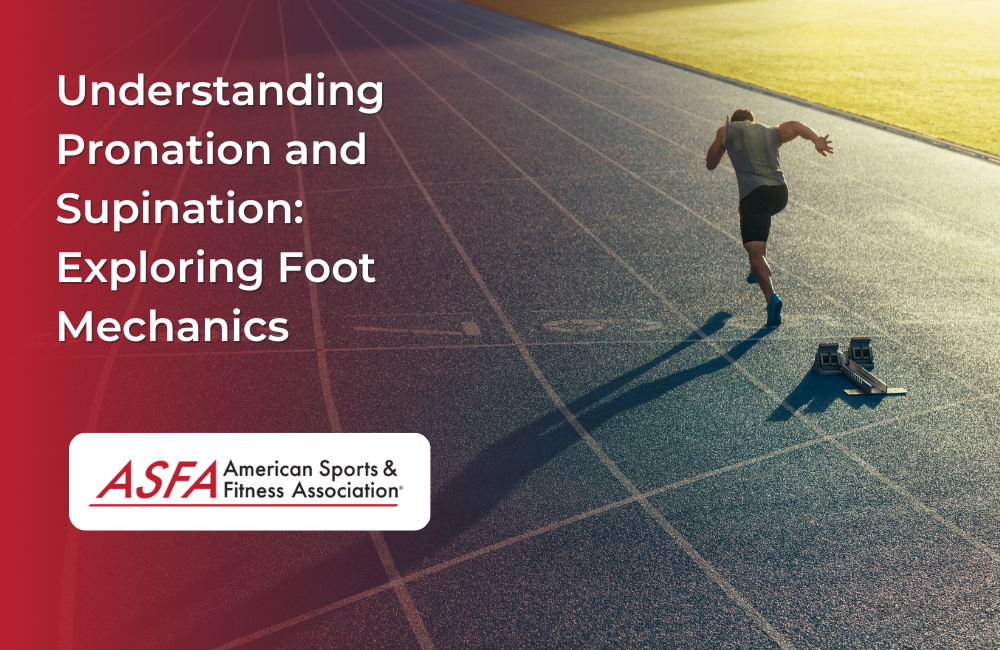Pronation and supination are terms commonly used to describe the natural movements and mechanics of the foot during walking, running, and other weight-bearing activities. They refer to the way the foot rolls and distributes forces as it moves through the gait cycle. In this guide, we'll explore the concepts of pronation and supination, their significance in foot mechanics, and how they can impact overall movement and exercise performance. Let's delve into the details.
1. Pronation:
Pronation is a term used to describe the inward rolling motion of the foot as it contacts the ground during the initial phase of the gait cycle. It involves the flattening of the arch and the rotation of the ankle joint. Pronation helps to absorb shock, distribute forces, and provide adaptability to uneven surfaces. The natural pronation motion allows for optimal weight distribution and stability during movement.
2. Overpronation:
While pronation is a normal and necessary part of foot mechanics, overpronation occurs when the foot rolls excessively inward or for an extended period. It is characterized by a collapsing or flattening of the arch, which can lead to imbalances and potential issues. Overpronation can be influenced by factors such as genetics, weak foot muscles, improper footwear, and structural abnormalities.
3. Potential Issues with Overpronation:
Excessive or prolonged overpronation can contribute to various foot and lower limb problems, including:
- Arch and Heel Pain: Overpronation can strain the ligaments and muscles in the arch and cause conditions like plantar fasciitis and heel spurs.
- Shin Splints: The excessive inward rolling motion can stress the muscles and connective tissues in the shin, leading to pain and inflammation.
- Knee and Hip Alignment: Overpronation can affect the alignment of the knee and hip joints, potentially contributing to issues such as knee pain, IT band syndrome, and hip discomfort.
- Achilles Tendinitis: The increased pronation can place additional strain on the Achilles tendon, leading to inflammation and pain.
- Lower Back Pain: Altered foot mechanics from overpronation can impact the alignment and function of the entire lower body, potentially contributing to lower back pain.
4. Supination:
Supination, also known as underpronation, is the opposite of pronation. It refers to the outward rolling motion of the foot during the push-off phase of the gait cycle. In supination, the foot maintains a higher arch and the ankle joint rotates outward. This movement helps generate power and stability during propulsion.
5. Potential Issues with Supination:
While pronation is considered the more common foot mechanics pattern, supination can also present challenges for some individuals. Excessive supination can lead to issues such as:
- High Arch Strain: The elevated arch in supination can put increased stress on the foot's structures, leading to potential discomfort and strain.
- Foot Instability: Insufficient pronation can reduce the foot's shock-absorbing ability, potentially resulting in a higher risk of stress fractures and other injuries.
- Limited Shock Absorption: The reduced ability to absorb shock during impact can transmit more force to the lower limbs and joints, potentially increasing the risk of conditions like stress fractures and shin splints.
6. Finding the Right Footwear:
Understanding your pronation or supination pattern can help guide your choice of footwear. Different shoe designs, such as stability shoes for overpronation or cushioned shoes for supination, can provide the necessary support and cushioning to promote optimal foot mechanics and reduce the risk of discomfort or injury. If you're unsure about your foot mechanics, consulting with a podiatrist or qualified shoe specialist can help determine the best shoe type for your specific needs.
7. Addressing Foot Mechanics:
If you experience discomfort or suspect issues related to pronation or supination, seeking professional guidance is advisable. A podiatrist, physical therapist, or other healthcare professional specializing in foot mechanics can evaluate your gait, assess any potential imbalances or abnormalities, and recommend appropriate interventions. This may include exercises to strengthen foot and lower limb muscles, orthotics, modifications to footwear, and gait retraining techniques.
Understanding the concepts of pronation and supination is essential for maintaining optimal foot mechanics and minimizing the risk of discomfort or injury. While pronation and supination are normal foot motions, excessive or prolonged deviations from the natural range can lead to issues. By understanding your foot mechanics, choosing the right footwear, and seeking professional guidance when needed, you can support your foot health and overall movement patterns. Remember, everyone's feet are unique, so it's important to address your specific needs to achieve optimal foot function and comfort.





